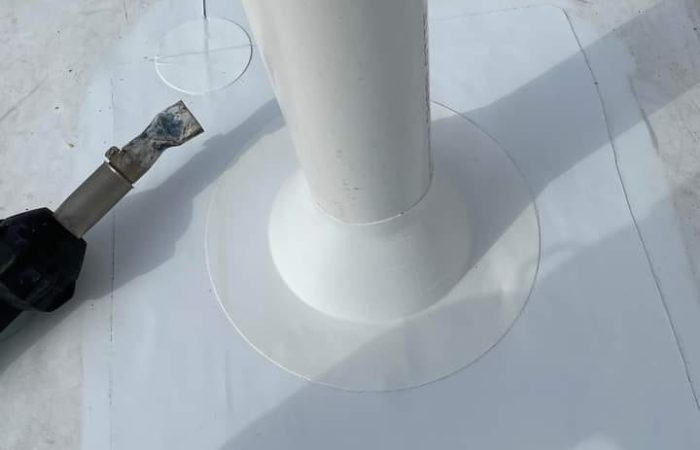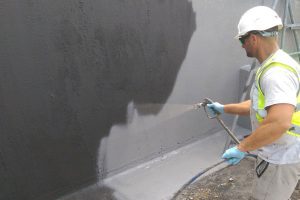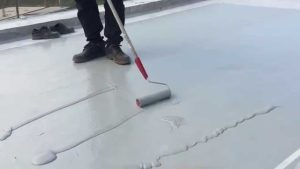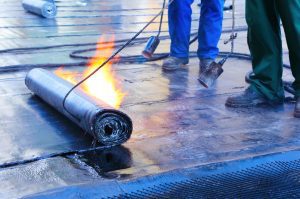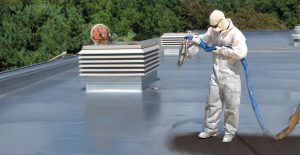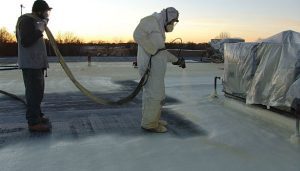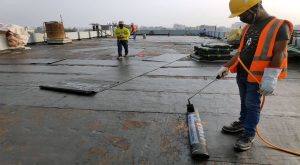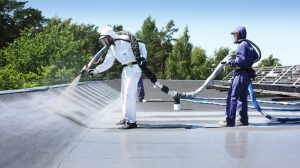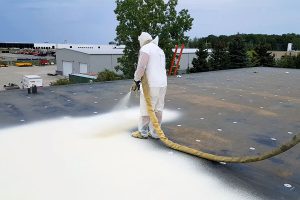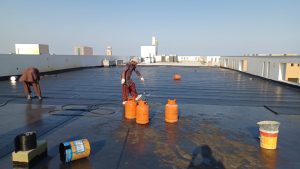A Comprehensive Guide for Contractors in Saudi Arabia
Book Chapters:
Introduction to Insulation and Its Importance in Saudi Arabia
Understanding Building Envelope and Its Role in Insulation
Types of Insulation Materials and Their Properties
Calculating Insulation Requirements for Residential and Commercial Buildings
Installation Techniques for Different Insulation Materials
Preparing Surfaces for Insulation and Choosing the Right Adhesives
Insulation for Roofs and Attics: Best Practices for Efficiency and Safety
Insulation for Walls: Techniques for Maximum Thermal Performance
Insulation for Floors and Foundations: Importance and Challenges
Vapor Barriers and Air Sealing: Maintaining the Integrity of Insulation
Fire Safety and Insulation: Understanding the Risks and Regulations
Soundproofing with Insulation: Techniques and Materials
Maintenance and Upkeep of Insulation Systems in Saudi Arabia
Troubleshooting Insulation Problems and Remedies
Innovations and Future of Insulation in Saudi Arabia
Book Introduction:
Saudi Arabia’s climate is characterized by extreme temperatures, high humidity, and sandstorms, which make insulation an essential aspect of any building’s construction. Insulation helps in reducing heat transfer, maintaining a comfortable indoor temperature, and improving energy efficiency. Insulation contractors in Saudi Arabia need to be familiar with the various insulation materials, installation techniques, and safety standards to ensure a successful and long-lasting insulation system.
The Art of Insulation: A Comprehensive Guide for Contractors in Saudi Arabia is a practical manual that covers all aspects of insulation, from the basics to the most advanced techniques. This book provides detailed information on insulation materials, their properties, and how to choose the right insulation for different applications. It also covers the installation techniques, safety standards, and maintenance requirements for insulation systems.
The book is structured in a way that allows readers to easily navigate through the content and find the information they need. Each chapter is dedicated to a specific aspect of insulation, and the chapters are arranged in a logical sequence that builds upon the previous chapters. The book is written in simple language and includes detailed illustrations and diagrams that help explain complex concepts.
Whether you are a seasoned insulation contractor or a newcomer to the field, The Art of Insulation: A Comprehensive Guide for Contractors in Saudi Arabia will provide you with the knowledge and skills you need to succeed in this challenging and rewarding industry.
Chapter 1: Introduction to Insulation and Its Importance in Saudi Arabia
Insulation is the process of reducing heat transfer between two surfaces by adding a layer of material between them. In buildings, insulation is used to keep the indoor temperature comfortable and to reduce energy consumption. In Saudi Arabia, where the temperature can reach up to 50°C in summer, insulation is essential to maintain a comfortable indoor temperature and to reduce the load on air conditioning systems.
The benefits of insulation are numerous. Properly installed insulation can reduce energy consumption by up to 30%, which translates into significant savings on electricity bills. Insulation also helps in reducing carbon emissions and in preserving the environment.
Insulation can be installed in different parts of a building, including roofs, walls, floors, and foundations. The choice of insulation material and installation technique depends on various factors, including the type of building, the climate, and the budget.
There are different types of insulation materials available, including fiberglass, mineral wool, cellulose, spray foam, and rigid foam. Each material has its own properties, such as R-value (thermal resistance), density, and flammability. The R-value is a measure of the insulation’s thermal resistance, and it indicates how effective the insulation is in preventing heat transfer. The higher the R-value, the better the insulation.
Chapter 1 (continued):
In Saudi Arabia, the building code requires a minimum R-value of 2.5 for walls and 4.0 for roofs. However, depending on the location and the type of building, higher R-values may be required. Therefore, it is important for insulation contractors in Saudi Arabia to have a good understanding of the building code and the local regulations.
In addition to the R-value, insulation materials also have other properties that need to be considered, such as moisture resistance, soundproofing ability, and fire resistance. Moisture resistance is particularly important in Saudi Arabia, where high humidity can cause condensation and mold growth. Soundproofing is also an important consideration, especially for commercial buildings and residential buildings located near noisy areas.
Another important aspect of insulation is the installation technique. Improper installation can lead to thermal bridging, air leaks, and other issues that can reduce the effectiveness of insulation. Therefore, it is important for insulation contractors in Saudi Arabia to have a good understanding of the installation techniques and to follow the manufacturer’s instructions carefully.
Insulation is a complex and important aspect of building construction, and it requires careful planning, selection of materials, and installation techniques. In the following chapters, we will discuss different insulation materials, installation techniques, and safety standards in more detail, and we will provide practical tips and advice for insulation contractors in Saudi Arabia.
Chapter 2: Types of Insulation Materials
There are several types of insulation materials available on the market, each with their own advantages and disadvantages. The choice of insulation material will depend on various factors, such as the desired R-value, the building type, the location, and the budget.
Here are some of the most common types of insulation materials used in Saudi Arabia:
Fiberglass: Fiberglass is one of the most commonly used insulation materials in Saudi Arabia. It is made of glass fibers and is available in batts, rolls, or loose-fill forms. Fiberglass insulation is lightweight, easy to install, and relatively inexpensive. It is also fire-resistant and can be used in a variety of applications.
Mineral wool: Mineral wool is another popular insulation material in Saudi Arabia. It is made of rock or slag fibers and is available in batts, rolls, or loose-fill forms. Mineral wool insulation is denser than fiberglass and has better soundproofing ability. It is also fire-resistant and can withstand high temperatures.
Spray foam: Spray foam insulation is a relatively new technology that has gained popularity in recent years. It is made of polyurethane or polyisocyanurate and is applied as a liquid that expands to fill gaps and crevices. Spray foam insulation is highly effective at preventing air leaks and can provide a higher R-value per inch than other insulation materials.
Cellulose: Cellulose insulation is made of recycled paper or other plant-based materials and is available in loose-fill or blown-in forms. It is an environmentally friendly insulation material and is often used in attics and walls.
Reflective insulation: Reflective insulation is made of aluminum foil or other reflective materials and is designed to reflect heat rather than absorb it. It is often used in hot climates and can be installed in attics, walls, and roofs.
Each of these insulation materials has its own advantages and disadvantages, and the choice of material will depend on various factors. In the next chapter, we will discuss the installation techniques for these different types of insulation materials.
Chapter 3: Installation Techniques for Insulation Materials
Proper installation of insulation materials is crucial to ensuring their effectiveness in reducing energy consumption and maintaining a comfortable indoor environment. Each insulation material has its own installation techniques that must be followed to achieve the desired R-value and prevent air leaks.
Here are some of the installation techniques for common insulation materials used in Saudi Arabia:
Fiberglass: Fiberglass batts and rolls are the most common form of fiberglass insulation used in Saudi Arabia. They should be cut to fit snugly between the studs, joists, or rafters, and should be stapled or nailed into place. It is important to ensure that there are no gaps or voids in the insulation, as this can reduce its effectiveness.
Mineral wool: Mineral wool insulation is installed in the same way as fiberglass insulation. The batts or rolls should be cut to fit snugly between the studs, joists, or rafters, and should be stapled or nailed into place. It is important to wear protective gloves and a mask when handling mineral wool, as it can cause skin irritation and respiratory problems.
Spray foam: Spray foam insulation is applied as a liquid that expands to fill gaps and crevices. It should be applied by a trained professional using specialized equipment. The foam should be applied in a continuous layer to ensure that there are no gaps or voids in the insulation. It is important to wear protective gear when applying spray foam, as it can be harmful if it comes into contact with the skin or eyes.
Cellulose: Cellulose insulation is typically installed as blown-in insulation. A machine is used to blow the loose-fill insulation into the desired space, such as an attic or wall cavity. It is important to ensure that the insulation is evenly distributed and that there are no gaps or voids.
Reflective insulation: Reflective insulation is typically installed in attics, walls, and roofs. It should be installed with the reflective surface facing outward to reflect heat away from the building. It is important to ensure that the insulation is installed without any gaps or voids.
In addition to these installation techniques, it is important to follow the manufacturer’s instructions carefully and to comply with local building codes and regulations. Improper installation can reduce the effectiveness of the insulation and can also lead to safety hazards. In the next chapter, we will discuss the safety standards and precautions that should be followed when installing insulation.
Chapter 4: Safety Precautions for Insulation Installation
Installing insulation materials can be hazardous if proper safety precautions are not taken. Some of the hazards associated with insulation installation include exposure to fiberglass or mineral wool fibers, inhalation of spray foam chemicals, and fire hazards.
Here are some safety precautions that should be followed when installing insulation materials:
Wear protective gear: When handling fiberglass or mineral wool insulation, wear long sleeves, pants, gloves, and a mask to avoid skin irritation and respiratory problems. When applying spray foam insulation, wear protective clothing, goggles, and a respirator to avoid contact with the skin and inhalation of chemicals. Protective gear is also recommended when installing cellulose insulation.
Ventilate the area: Proper ventilation is important when installing spray foam insulation, as the chemicals used in the application process can be harmful if inhaled. Open windows and doors, and use exhaust fans to ensure that the area is well-ventilated during installation.
Use caution when using power tools: Power tools such as saws and drills can produce dust and debris that can be hazardous to the installer’s health. Wear a mask and safety glasses when using power tools.
Avoid fire hazards: Insulation materials can be combustible, so it is important to avoid fire hazards during installation. Use caution when using tools that produce heat or sparks, and avoid smoking or using open flames in the area.
Follow manufacturer’s instructions: It is important to follow the manufacturer’s instructions carefully when installing insulation materials. Improper installation can reduce the effectiveness of the insulation and can also lead to safety hazards.
Dispose of waste properly: After installation, dispose of any waste materials, such as scraps or empty spray foam cans, properly. Do not burn insulation materials, as this can release hazardous chemicals into the air.
By following these safety precautions, installers can reduce the risk of injury or illness and ensure that the insulation materials are installed properly. In the next chapter, we will discuss the benefits of properly installed insulation materials, including energy savings and improved indoor air quality.
Chapter 5: Benefits of Properly Installed Insulation
Properly installed insulation can provide many benefits for homes and buildings, including energy savings, improved indoor air quality, and increased comfort.
Energy Savings: One of the most significant benefits of properly installed insulation is the potential for energy savings. Insulation materials work to slow the transfer of heat between the interior and exterior of a building, which reduces the need for heating and cooling systems to work as hard. This can lead to lower energy bills and a more sustainable living or working environment.
Improved Indoor Air Quality: Insulation materials can also help to improve indoor air quality by reducing the infiltration of outdoor pollutants, such as dust, pollen, and mold spores. Properly installed insulation can also reduce the infiltration of moisture, which can lead to mold growth and other air quality issues.
Increased Comfort: Insulation materials can help to increase the overall comfort of a home or building by maintaining a consistent temperature throughout the space. This can reduce drafts, cold spots, and hot spots, making the indoor environment more comfortable for occupants.
Reduced Noise: Some insulation materials, such as fiberglass and mineral wool, can also help to reduce noise pollution by absorbing sound waves. This can be especially beneficial in noisy environments, such as near busy streets or in multi-unit buildings.
Environmental Benefits: Properly installed insulation can also have environmental benefits, such as reducing greenhouse gas emissions associated with energy use and reducing the need for new power plants and transmission lines.
In summary, properly installed insulation can provide many benefits for homes and buildings, including energy savings, improved indoor air quality, increased comfort, reduced noise, and environmental benefits. In the next chapter, we will discuss the different types of insulation materials available and their characteristics.
Chapter 6: Types of Insulation Materials
There are many different types of insulation materials available on the market today, each with their own unique characteristics and applications. Here are some of the most common types of insulation materials:
Fiberglass: Fiberglass insulation is made from glass fibers and is one of the most commonly used insulation materials. It is available in both batt and blown-in forms and is easy to install. Fiberglass insulation is also affordable and has good thermal performance.
Mineral Wool: Mineral wool insulation is made from rock or slag fibers and is also available in both batt and blown-in forms. It has good fire resistance and sound absorption properties, making it a popular choice for use in walls, ceilings, and floors.
Cellulose: Cellulose insulation is made from recycled paper and is available in a blown-in form. It has good thermal performance and is an eco-friendly option for insulation.
Spray Foam: Spray foam insulation is a two-component system that is sprayed onto surfaces and expands to fill gaps and cracks. It has excellent thermal performance and air sealing properties, but can be more expensive than other insulation materials.
Rigid Foam: Rigid foam insulation is a board-like material that is available in several different types, including polystyrene, polyurethane, and polyisocyanurate. It has good thermal performance and can be used in walls, roofs, and foundations.
Radiant Barrier: Radiant barrier insulation is a reflective material that is installed in attics to reduce the amount of heat that enters the home through the roof. It works by reflecting radiant heat back out of the home, reducing the need for air conditioning.
Each type of insulation material has its own unique characteristics and applications. When choosing an insulation material, it is important to consider factors such as the R-value (thermal resistance), cost, ease of installation, and environmental impact. In the next chapter, we will discuss the R-value and how it is used to determine the effectiveness of insulation materials.
Chapter 7: Understanding R-Value
When choosing an insulation material, one of the most important factors to consider is its R-value. The R-value is a measure of the insulation material’s thermal resistance, or its ability to resist the transfer of heat. The higher the R-value, the more effective the insulation material is at reducing heat flow.
The R-value is determined by several factors, including the type and thickness of the insulation material, as well as its density and the environment in which it is installed. For example, fiberglass insulation has an R-value of approximately 3.7 per inch, while cellulose insulation has an R-value of approximately 3.5 per inch.
To determine the appropriate R-value for a specific area of a home or building, it is important to consider factors such as the climate, the type of heating and cooling system being used, and the local building codes. For example, homes in colder climates may require insulation with a higher R-value to reduce heat loss and keep the home comfortable.
It is also important to note that the R-value of an insulation material is not the only factor that determines its effectiveness. Factors such as air infiltration and moisture control can also impact the overall performance of insulation materials.
When installing insulation, it is important to follow manufacturer guidelines and local building codes to ensure that the insulation is properly installed and will provide the desired thermal resistance. In the next chapter, we will discuss some best practices for installing insulation in different areas of a home or building.
Chapter 8: Best Practices for Insulation Installation
Proper installation is key to the effectiveness of insulation materials. Here are some best practices for installing insulation in different areas of a home or building:
Attic: When installing insulation in an attic, it is important to ensure that the insulation is installed evenly and covers the entire attic space. Any gaps or areas without insulation can lead to heat loss and reduced energy efficiency. It is also important to ensure that insulation is not blocking ventilation points or creating a fire hazard.
Walls: When installing insulation in walls, it is important to consider the type of wall construction and the placement of electrical wiring and plumbing. Batts or blown-in insulation can be used in walls, but it is important to ensure that the insulation is evenly distributed and not compressed, as this can reduce its effectiveness.
Floors: When installing insulation in floors, it is important to consider the type of floor construction and whether the insulation will be exposed to moisture or high humidity. For example, in crawl spaces or basement floors, it may be necessary to use a moisture-resistant insulation material.
Ductwork: Insulating ductwork can help to reduce heat loss and increase energy efficiency in a heating and cooling system. When insulating ductwork, it is important to use an appropriate insulation material and ensure that it is properly sealed to prevent air leakage.
Pipes: Insulating pipes can help to prevent heat loss and reduce the risk of frozen pipes. When insulating pipes, it is important to use an appropriate insulation material and ensure that the insulation is properly sealed and protected from moisture.
Following these best practices can help to ensure that insulation is properly installed and will provide the desired thermal resistance. In the next chapter, we will discuss some common problems that can occur with insulation and how to address them.
Chapter 9: Common Insulation Problems and Solutions
While insulation can be a highly effective way to reduce energy costs and improve comfort in a home or building, there are some common problems that can occur with insulation. Here are some of the most common problems and their solutions:
Insufficient insulation: Insufficient insulation can lead to heat loss and reduced energy efficiency. The solution to this problem is to add more insulation to the affected area. This may involve installing additional batts or blowing in more insulation.
Improper installation: Improper installation can lead to gaps or compressed insulation, reducing its effectiveness. The solution to this problem is to ensure that the insulation is installed properly and in accordance with manufacturer guidelines and local building codes.
Moisture: Moisture can cause insulation to become saturated and lose its effectiveness. The solution to this problem is to identify and address the source of the moisture and replace any damaged insulation.
Air leakage: Air leakage can occur around doors, windows, and other openings in a home or building, reducing the effectiveness of insulation. The solution to this problem is to seal any gaps or cracks using caulk, weatherstripping, or other appropriate materials.
Pest infestation: Pests such as rodents can damage insulation and create gaps that reduce its effectiveness. The solution to this problem is to identify and address the source of the pest infestation and replace any damaged insulation.
By identifying and addressing these common insulation problems, homeowners and building owners can ensure that their insulation is working effectively to reduce energy costs and improve comfort. In the next chapter, we will discuss some tips for maintaining insulation and maximizing its lifespan.
Chapter 10: Insulation Maintenance and Lifespan
Proper insulation maintenance is key to ensuring that insulation continues to provide optimal performance and energy savings over its lifespan. Here are some tips for maintaining insulation and maximizing its lifespan:
Regular inspection: Regularly inspect insulation for signs of damage, moisture, or compression. Address any issues promptly to prevent further damage and maintain insulation effectiveness.
Air sealing: Proper air sealing can help prevent air leaks that can reduce insulation effectiveness. Check for gaps and cracks around windows, doors, and other openings, and seal them with appropriate materials.
HVAC maintenance: Proper HVAC maintenance can help ensure that insulation is working effectively. Clean or replace air filters regularly, and have HVAC systems inspected and serviced annually.
Pest control: Regular pest control measures can help prevent damage to insulation by pests such as rodents. Address any pest infestations promptly and replace damaged insulation as needed.
Avoid compression: Avoid compressing insulation, which can reduce its effectiveness. Do not store items on top of insulation in attics or crawl spaces, and be careful when walking on or around insulation.
With proper maintenance and care, insulation can last for many years and continue to provide energy savings and comfort in a home or building. However, if insulation is damaged or has reached the end of its lifespan, it may be necessary to replace it to maintain optimal energy efficiency. In the next chapter, we will discuss the benefits of professional insulation installation and why it may be worth considering.
Chapter 11: The Benefits of Professional Insulation Installation
While DIY insulation installation may seem like a cost-effective option, there are many benefits to hiring a professional insulation contractor. Here are some of the advantages of professional insulation installation:
Expertise: Professional insulation contractors have the knowledge and expertise to properly install insulation in a home or building. They can ensure that the insulation is installed according to manufacturer guidelines and local building codes, maximizing its effectiveness and energy savings.
Efficiency: Professional insulation contractors have the tools and equipment needed to quickly and efficiently install insulation. This can save time and money compared to a DIY installation.
Safety: Insulation installation can be dangerous, particularly in hard-to-reach areas such as attics and crawl spaces. Professional insulation contractors have the training and equipment needed to safely install insulation and avoid injury.
Quality materials: Professional insulation contractors typically use high-quality insulation materials that are designed for optimal energy efficiency and performance. This can ensure that the insulation will provide long-lasting energy savings and comfort.
Warranty: Professional insulation installation often comes with a warranty that guarantees the quality of the installation and materials used. This can provide peace of mind and protection against any issues that may arise.
Overall, professional insulation installation can be a valuable investment in a home or building’s energy efficiency and comfort. By hiring a qualified insulation contractor, homeowners and building owners can ensure that their insulation is installed properly and effectively, maximizing its lifespan and energy savings.
Chapter 12: Choosing an Insulation Contractor
When it comes to selecting an insulation contractor, there are several factors to consider to ensure that you choose a reputable and qualified professional. Here are some tips for choosing an insulation contractor:
Credentials: Check that the insulation contractor has the appropriate credentials, such as a valid license and insurance. This can provide protection against any accidents or damages that may occur during the installation process.
Experience: Look for an insulation contractor with extensive experience in the industry. Ask for references and examples of previous work to ensure that they have the knowledge and expertise needed to install insulation effectively.
Knowledge: Choose an insulation contractor who is knowledgeable about the different types of insulation available and can recommend the best option for your specific needs and budget.
Professionalism: Look for an insulation contractor who is professional and courteous in their interactions with customers. They should be responsive to questions and concerns and provide clear and transparent communication throughout the installation process.
Price: While price should not be the only factor in choosing an insulation contractor, it is important to obtain multiple quotes and compare prices to ensure that you are getting a fair price for the services provided.
By carefully considering these factors and conducting thorough research, homeowners and building owners can select an insulation contractor who will provide high-quality insulation installation and long-lasting energy savings.
Chapter 13: Maintaining Insulation for Long-Term Efficiency
While insulation is a valuable investment in a home or building’s energy efficiency, it is important to maintain it properly to ensure that it continues to provide long-lasting benefits. Here are some tips for maintaining insulation:
Check for damage: Regularly inspect insulation for any signs of damage, such as moisture, mold, or animal infestations. Address any issues promptly to prevent further damage and maintain the insulation’s effectiveness.
Seal gaps: Inspect the area around doors, windows, and other openings for gaps that may allow air to escape. Use caulk or weatherstripping to seal any gaps and prevent energy loss.
Monitor humidity levels: High humidity levels can lead to moisture buildup in insulation, reducing its effectiveness. Use a dehumidifier to maintain a comfortable and safe humidity level.
Keep insulation dry: Moisture can greatly reduce the effectiveness of insulation. Ensure that the area around insulation is dry and well-ventilated to prevent moisture buildup.
Schedule regular inspections: Consider scheduling regular inspections with a professional insulation contractor to ensure that the insulation is performing optimally and address any issues before they become major problems.
By taking these steps to maintain insulation, homeowners and building owners can maximize their energy savings and comfort for years to come.
Chapter 14: Upgrading Insulation for Increased Energy Efficiency
As energy efficiency standards continue to evolve, homeowners and building owners may want to consider upgrading their insulation to improve their building’s energy performance. Here are some reasons to consider upgrading insulation:
Increased energy savings: Upgrading insulation can significantly reduce energy costs by reducing the amount of heat loss or gain through the building envelope. This can lead to significant long-term savings on energy bills.
Improved comfort: Upgrading insulation can also improve the overall comfort of a home or building by reducing drafts, maintaining consistent temperatures, and reducing noise levels.
Increased property value: Energy-efficient homes and buildings are becoming increasingly desirable to buyers, making an insulation upgrade a valuable investment in the property’s long-term value.
Environmental benefits: By reducing energy consumption, upgrading insulation can also help reduce a building’s carbon footprint and contribute to a more sustainable future.
When considering an insulation upgrade, it is important to work with a professional insulation contractor who can recommend the best options for the specific building and budget. Upgrading insulation can be a valuable investment in a building’s energy efficiency and long-term value.
Chapter 15: Choosing the Right Insulation Contractor
Choosing the right insulation contractor is essential to ensure that insulation is installed correctly and efficiently. Here are some factors to consider when selecting an insulation contractor:
Experience and expertise: Look for a contractor with experience and expertise in insulation installation, who is familiar with local building codes and energy efficiency standards.
Licenses and certifications: Ensure that the contractor has the necessary licenses and certifications to perform the work. This can provide peace of mind that the work will be done to a high standard.
Quality of materials: Check that the contractor uses high-quality insulation materials from reputable manufacturers.
References and reviews: Ask for references from past clients and check online reviews to get an idea of the contractor’s reputation and quality of work.
Communication and customer service: Look for a contractor who communicates clearly and is responsive to questions and concerns. Good customer service is essential for a positive experience.
Price and value: While price is an important factor, it should not be the sole deciding factor. Consider the value of the work and the overall quality of the contractor’s services when making a decision.
By considering these factors, homeowners and building owners can select an insulation contractor who will provide high-quality work and ensure long-term energy savings and comfort.
Conclusion:
In conclusion, insulation is an essential component of any building’s energy efficiency and overall comfort. By reducing heat loss or gain through the building envelope, insulation can significantly reduce energy consumption and improve the overall comfort of a home or building. When considering insulation options, it is important to work with a professional insulation contractor who can recommend the best options for the specific building and budget. By choosing the right insulation materials and installing them correctly, homeowners and building owners can enjoy long-term energy savings and increased property value. Insulation is a valuable investment in a building’s energy efficiency and sustainability, and it is essential for building owners to prioritize this component in their construction or renovation plans.

